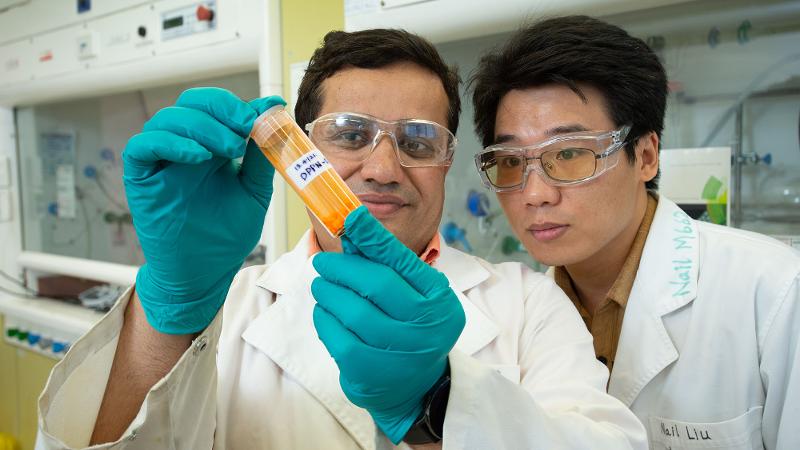A new paper by a team of Queensland University of Technology (QUT) researchers details the use of a family of pigments called diketopyrrolopyrrole (DPP) in the developing fields of organic electronics. The carbon-based organic materials, which are used for their color as dyes and for their charge transporting and optoelectronic properties, can be used to produce stretchable and biodegradable electronic devices, including wearable technology and solar cells.
According to the QUT researchers, fused aromatic DPP-based functional semiconductors have attracted considerable attention in recent times and demonstrated remarkable improvements in both organic field‐effect transistor and organic PV devices due to excellent planarity and better electron‐withdrawing ability. Driven by this success, DPP‐based materials are now being exploited in various other electronic devices including, chemical sensors, memory devices, photodetectors, and perovskite solar cells.
“With the fast growth of high-mobility materials, they are increasingly considered for use in stretchable electronic devices that can provide unique mechanical properties including being able to be bent, twisted, stretched, and wrapped over irregular or moving objects,” said QUT Associate Professor Prashant Sonar, who leads the team of researchers behind the article published in the journal Advanced Materials.
Along with flexibility, an advantage DPP pigments have in use in organic electronic devices is that they are lower cost, lighter weight and are produced without the need to mine valuable resources. On top of that, such devices can be made biodegradable to help tackle the global problem of electronic waste. All these properties make DPP pigments also attractive for biomedical instruments, bioinspired devices, and artificial skin for robotics and prosthetics.
“With these types of devices, we’re not looking at the scale of 20 years or 30 years, we are looking at the scale of three, four or five years and for all these applications, low-cost printable organic semiconductors is the bottleneck,” Professor Sonar said.
Last year, Professor Sonar’s research group discovered a new material by combining DPP Pigment Red 254 – the color nicknamed Ferrari Red – and naphthalene, well known as an ingredient in moth repellents. The researchers claim that the new DPP derivative, naphthalene flanked DPP or DPPN, has potential uses in organic transistors and flexible solar cells.
In 2018, Professor Sonar also developed semiconductor materials using another class of an orange dye called anthanthrone (ANT) which could be used in the future for perovskite flexible solar cells and built into curtains, sail shades or even clothing. “Together with colleagues at Swansea University, we have shown for the first time, how low-cost anthanthrone-dye-based hole transporting materials can exhibit higher performance, with 17.5% efficiency, and retain respectable performance after 50 hours in 58% relative humidity,” Professor Sonar said at the time.
This content is protected by copyright and may not be reused. If you want to cooperate with us and would like to reuse some of our content, please contact: editors@pv-magazine.com.









By submitting this form you agree to pv magazine using your data for the purposes of publishing your comment.
Your personal data will only be disclosed or otherwise transmitted to third parties for the purposes of spam filtering or if this is necessary for technical maintenance of the website. Any other transfer to third parties will not take place unless this is justified on the basis of applicable data protection regulations or if pv magazine is legally obliged to do so.
You may revoke this consent at any time with effect for the future, in which case your personal data will be deleted immediately. Otherwise, your data will be deleted if pv magazine has processed your request or the purpose of data storage is fulfilled.
Further information on data privacy can be found in our Data Protection Policy.